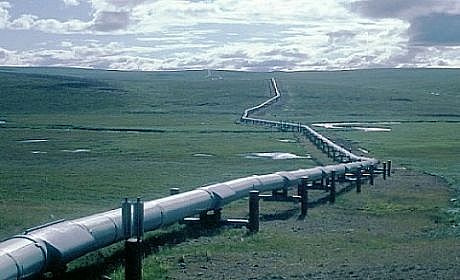The Pipeline that Bypassed Sanctions

Construction of the pipeline for the export of Iran’s gas to Pakistan began in Pakistan today with the presence of the presidents of the two countries. The first part of this pipeline, which runs 900 kilometers from Asalouyeh to Iranshahr, was constructed a year and a half ago. Construction of the second part, which is 120 kilometers long from Iranshahr to the Pakistani border, started last year. The construction of the pipeline inside Pakistan is supposed to be finished in two years.
This project is of utmost importance for both countries. The construction of a gas export pipeline to Pakistan is very significant for this country because Pakistan’s need for energy is very serious. This was seen in the winter where in some cities in Pakistan, there was no electricity for 18 to 20 hours a day. Furthermore, many of this country’s factories, particularly the textile industry, had to shut down due to energy shortages. This pipeline is important for Pakistan because it can provide a long-term energy source for this country.
On the other hand, considering Iran’s special conditions and the sanctions imposed upon it by the western countries which have caused problems for Iran’s sale of its energy, this pipeline can somehow bypass the sanctions and, under the present economic conditions, seriously help Iran.
In addition to the long-term economic benefits which Iran seeks in the consumer market, this pipeline has political significance for Iran as well. The reason is that the West, especially the US, exerts pressure on other countries to prevent them from signing oil and gas contracts with Iran. It had put some pressure on India and Pakistan regarding this pipeline as well. That is why Iran was ready to give concessions to Pakistan for this project and accepted to give 500 million dollars of credit for the building of this pipeline inside Pakistan. This is while there were differences between Iran and Pakistan in this regard before. From these two angles, this pipeline can involve both countries in an important project which provides the interests of Iran and Pakistan and will certainly impact bilateral relations.
Nevertheless, this pipeline was known as the “Peace pipeline“and was supposed to be made with the participation of Iran, Pakistan, and India. But despite a decade of negotiations, this agreement was not made. What has happened that this project is now being enforced without India’s presence? The fact is that India took steps forward in this project to a certain extent, but withdrew due to two reasons. One reason was that they were basically not willing to accept that this pipeline pass through Pakistan, for they were concerned that if, under certain conditions, relations between India and Pakistan became critical, Pakistan might use this pipeline to exert pressure on India and cut off the flow of gas. That is why India proposed that this pipeline be built in the sea, i.e. to enter the sea from Iran’s border in the Gwadar region and continue to Mumbai. Of course, this project would have been very costly and would have also needed more progressive technology which even India did not have and was mostly in the hands of the European countries and the US. The other problem which India had with this project was that it would have had to pay 350 million dollars to Pakistan as the transit fee and they were not willing to empower their rival from an economic point of view. Therefore, due to these two reasons, India had doubts. Of course, the US’ disagreement and its pressure on India for non-participation in this project were also effective. But this does not mean that India made this decision solely under the influence of the US. The fact is that the nuclear agreement which India signed with the US based on which the US was supposed to build 13 nuclear reactors for India, increased India’s doubts for participation in the Peace pipeline project. They reached this conclusion based on their national interests and decided to receive this concession from the US and withdraw from the Peace pipeline project. But this does not mean that the issue of the Peace pipeline is eliminated from their minds forever. They have left this issue open and might get involved again in the future and make deals with Iran. Nevertheless, it must not be forgotten that due to India’s rapid economic development, this country’s need for energy will grow in the future.
Hence, my interpretation is that the Indians will receive this concession from the US and then, in the future, engage with Iran based on their national interests and draw the pipeline to India so as to be able to use Iran’s gas. The rivalry between India and China must also be taken into consideration. It must be considered that China has heavily invested in the Gwadar region and if the opportunity arises and suitable prices are proposed, they are willing to continue this pipeline from the mountainous Qare Qorun region to Tibet and China. This will create problems for India in the long run, for their rival will take advantage of this pipeline, particularly considering that China’s need for energy will also increase in the future. Thus, India will, in the long run, make deals with Iran, but in the short run, it will not participate in this project until the nuclear reactors are given by the US.

